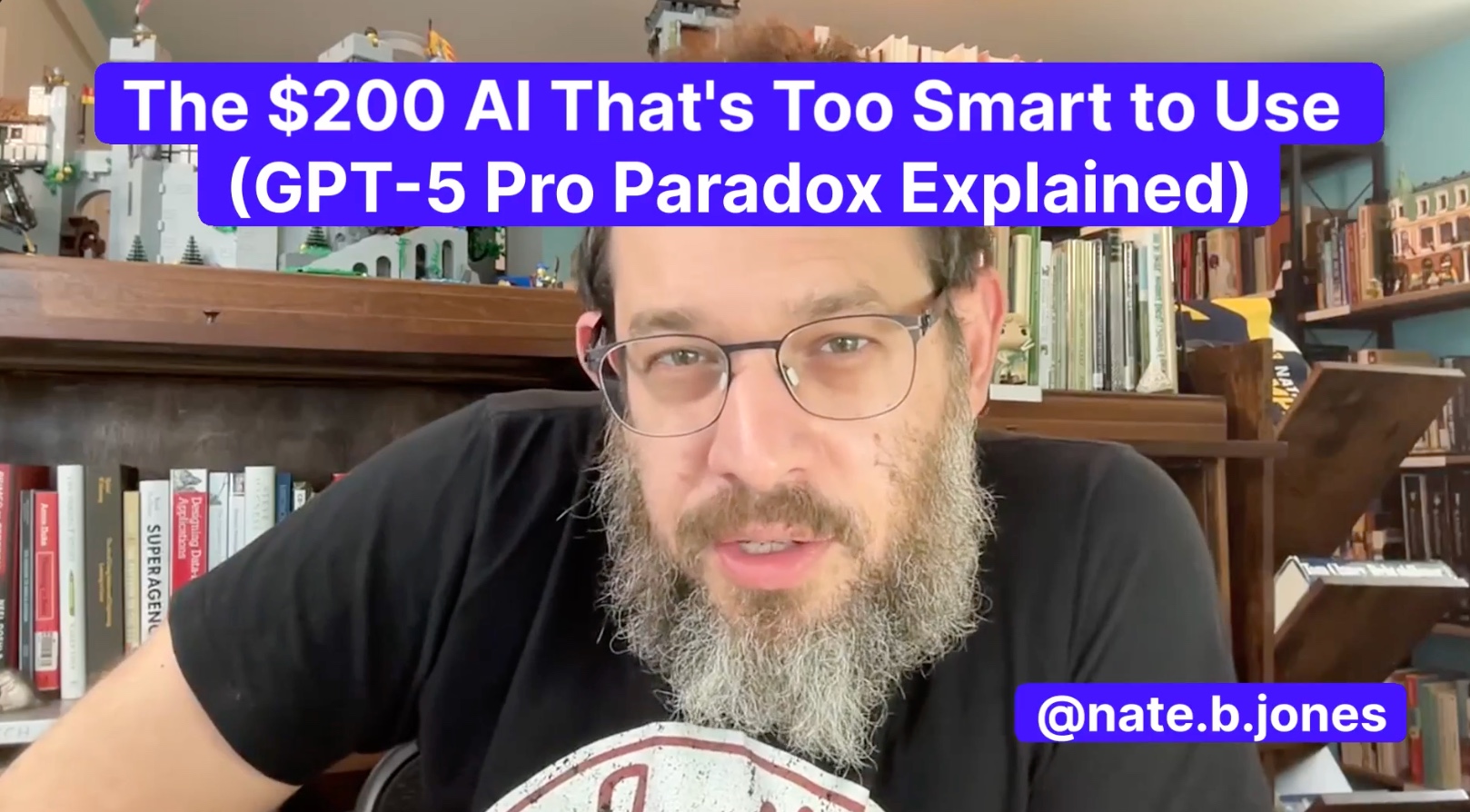Let's acknowledge the elephant in the room: $200 per month for ChatGPT Pro feels insane.
It's ten times what we pay for Plus. It's more than Adobe Creative Suite, more than Microsoft 365, more than most people's entire software budget.
Most people won’t pay it. But even if you’re not paying for it, you need to get the story here, because something very weird is happening that hints at where AI is going in the future.
Here’s wha tI’m noticing: While most of us are still processing the sticker shock, a subset of users is begging OpenAI to let them pay even more. Not complaining about the price—asking for higher tiers with more tokens. These aren't AI influencers chasing clout. They're practitioners who've discovered something the rest of us haven't figured out yet.
Meanwhile, the reviews are schizophrenic. The same model gets called "revolutionary" and "useless” depending the use-case (I’ve reported on both sides here). Users report it's simultaneously the smartest AI they've ever used and somehow worse than GPT-4o at basic tasks. It scores 148 on IQ tests but can't maintain personality through a chat. It produces institutional-grade analysis but fails at creative writing.
After a few days of intensive testing, I've figured out what's actually happening, and it's bigger than just another model release.
We're witnessing the end of universal AI—the death of the idea that each new model will be uniformly "better." GPT-5 Pro isn't better or worse. It's jagged. Brilliant at some things, terrible at others, and that jaggedness isn't a bug. It's the future.
This matters because everything we think we know about AI strategy is based on linear progress. More parameters, more capability, higher price. That’s sort of the whole game with AGI.
But GPT-5 Pro breaks that model completely. It uses a fundamentally different architecture—parallel reasoning chains that argue with themselves and try to convert on a single correct answer—creating a form of correctness-obsessed intelligence that's alien to how we've thought about AI.
If you're building with AI, investing in AI companies, or trying to stay relevant as AI transforms your industry, you need to understand what GPT-5 Pro represents. Not because you should necessarily buy it (I’ll give you the tradeoffs here), but because it's the opening move in a completely different game. One where knowing which AI to use for which task matters more than having the "best" AI. Where architectural trade-offs determine competitive advantage. Where the most advanced model might be the wrong choice for most of your work.
The companies that figure this out first—that stop thinking about AI as a monolithic capability and start thinking about it as a portfolio of specialized tools—will have massive advantages. The ones that don't will waste thousands on the wrong models for the wrong tasks.
What follows are my field notes from testing GPT-5 Pro across every major use case, documenting exactly where this $200/month paradox succeeds and fails. Consider it your map to the jagged frontier of AI capability. Because the future just got a lot more complicated, and a lot more interesting.
Listen to this episode with a 7-day free trial
Subscribe to Nate’s Substack to listen to this post and get 7 days of free access to the full post archives.













